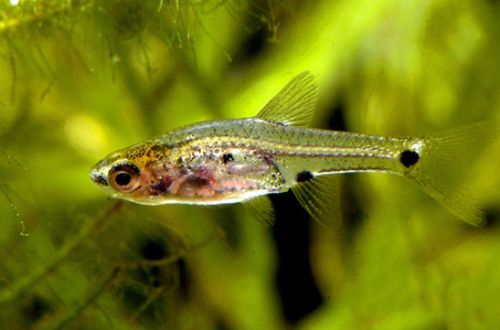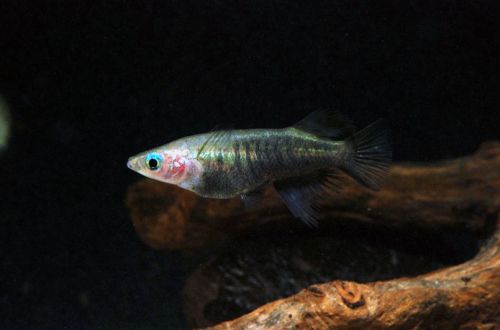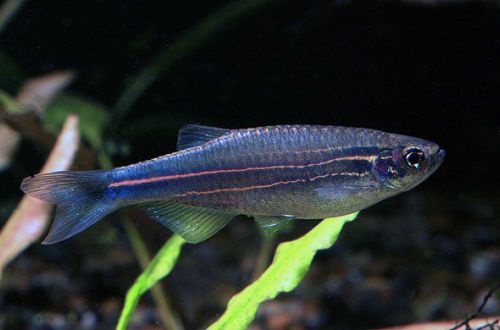
Rasbora tiny
Rasbora tiny, scientific name Boraras micros, belongs to the Cyprinidae family. Not the most popular aquarium species due to their rather modest coloration, however, these fish will make a good addition to the freshwater aquarium community. Easy to keep and unpretentious, can be recommended to beginner aquarists.

Contents
Habitat
It comes from Southeast Asia from the vast Mekong River Basin in northwestern Thailand. In nature, it inhabits shallow reservoirs with clean water, mainly swamps, floodplains and flooded areas of tropical forests, and is also found on agricultural land – rice fields.
Brief information:
- The volume of the aquarium – from 40 liters.
- Temperature – 20-28°C
- Value pH — 6.0–7.0
- Water hardness – soft (2-10 dGH)
- Substrate type – any
- Lighting – subdued
- Brackish water – no
- Water movement is weak
- The size of the fish is 1–1.5 cm.
- Feeding – any food of suitable size
- Temperament – peaceful
- Keeping in a group of 8-10 individuals
Description
Adults reach a length of only one and a half centimeters, which makes them perhaps the smallest aquarium fish. Size is probably the only distinguishing feature of this species. The coloration is nondescript gray translucent, the ridge is visible through the body. Sexual dimorphism is weakly expressed, it is problematic to distinguish males from females.
Food
In a home aquarium, it will accept most popular foods of a suitable size. The daily diet may consist of dry flakes, granules combined with live or frozen brine shrimp, daphnia and similar foods.
Maintenance and care, arrangement of the aquarium
The optimal size of the aquarium for such small fish can start from 20 liters. In the design, it is recommended to use a large number of aquatic plants, including floating ones, various snags and other shelters. The lighting is subdued.
Tiny rasboras come from reservoirs with a weak current, therefore they are not able to withstand a moderate and even more powerful movement of water. In an aquarium, filters create flow, so when choosing a filtration system, you should choose models that do not cause excessive water movement.
Maintenance comes down to a few mandatory procedures: regular cleaning of organic waste (excrement, food debris), weekly replacement of part of the water with fresh water, control of basic hydrochemical parameters (pH, dGH).
Behavior and Compatibility
Peaceful calm fish. Compatible with other types of comparable size. Keeping a flock of at least 8-10 individuals – the more, the better. Alone, it will become shy and will hide in shelters.
Breeding / breeding
In a mature aquarium with the right conditions and with several adult females and males, spawning will occur regularly. With the onset of the mating season, the fish scatter a lot of eggs, which sink to the bottom and from that moment become left to themselves. There is no parental care for the offspring; moreover, newly-minted parents will eat their own eggs on occasion. Therefore, in the general aquarium, the survival rate of fry will be very low.
If you plan to keep the entire brood, then immediately after spawning, the eggs should be transferred to a separate tank – a spawning aquarium. It usually has a volume of 10-15 liters, is equipped with a heater and a simple airlift filter with a sponge. Lighting is not required. Unpretentious shade-loving plants and / or ferns are suitable as decorative elements.
The incubation period lasts about 2 days, after another 24 hours the fry will be able to swim independently in search of food. Despite the simple breeding, it will not be easy to feed the fry due to their tiny size. At the first stage, the ciliates of the shoe will become the best food. After 10 days, the juveniles will be large enough to switch to Artemia nauplius or other microfood.
Fish diseases
Hardy and unpretentious fish. If kept in suitable conditions, then health problems do not arise. Diseases occur in case of injury, contact with already sick fish or significant deterioration of the habitat (dirty aquarium, poor food, etc.). Read more about symptoms and treatments in the Aquarium Fish Diseases section.





